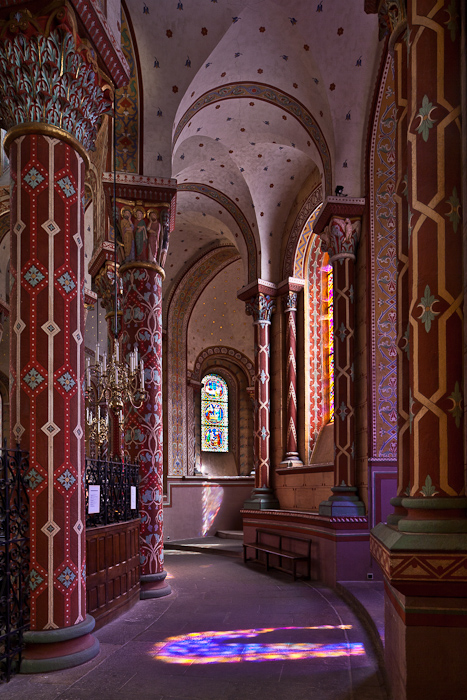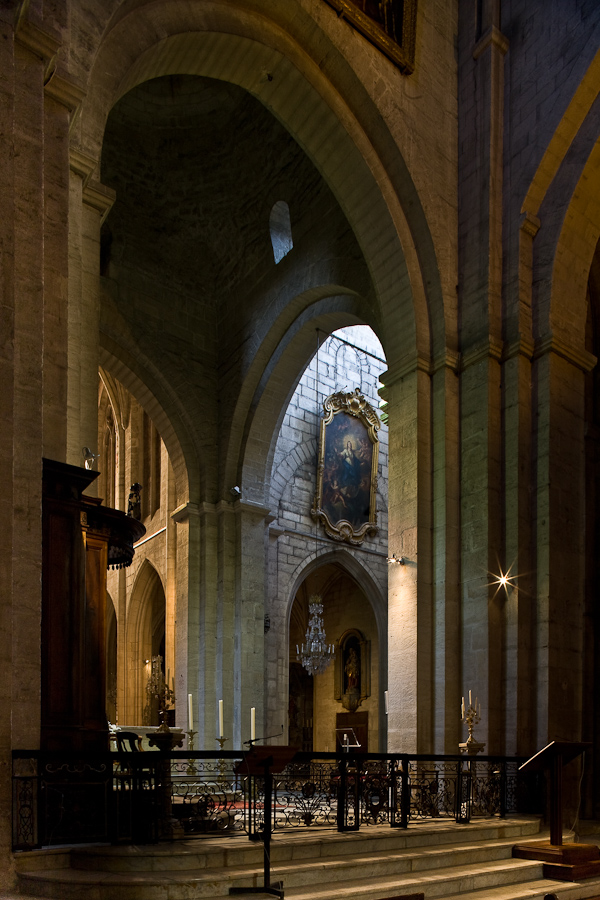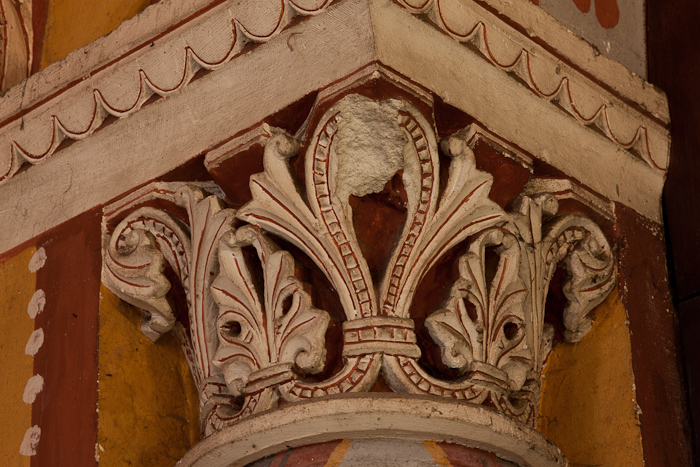PJ and I look forward every year to our sabbatical in Europe to photograph the Romanesque and Gothic churches that are the backbone of Via Lucis. Of course we love visiting with our friends there, staying at our favorite hotels, eating the wonderful meals and drinking the wine. The churches themselves are glorious and we have never for a single moment tired of photographing them.
We have written often of how the churches move us profoundly and stir deep emotions. But the churches themselves are only part of that experience. Travel itself is important, the journey that we take across the Atlantic and into the heart of France. We leave the familiar and the security of the understood.

Travel somehow clarifies experience like heat clarifies butter. By removing ourselves from familiar surroundings, we sometimes recognize the forces operating on us, and perhaps the place our life occupies in the world. It is the reason for the expatriate literary movements throughout history. As strangers, we see our world and ourselves more clearly.
In this way, Hemingway discovered his moveable feast, Sinclair Lewis his Babbitt, and Picasso his Demoiselles d’Avignon. In this way, PJ and I have discovered Sainte Madeleine of Vézelay, Saint Austremoine of Issoire, and Notre Dame de Chartres.

On a visit to Turkey quite a few years ago, I felt that something inside me was changing. I remember thinking “Something is happening to me here if I let it sink in and let it take root. Something in me has changed. The world is somehow different to me.” Standing in the theater at Pergamum, the words of Euripides came to me; “I see two suns, two cities, two Thebes, each with seven gates, and you, you are a bull.” On the ground lay a fallen Corinthian capital, surrounded by living acanthus plants. The carvings on the fallen stones were the exact acanthus that encircled them.
I remember almost crying as I felt and understood the world differently, if only for a moment. I was somehow open to the new sensations, uninterrupted, uninterpreted, and unanalyzed. The ideas and sensations washed over me. But even at that moment I asked myself “Can I let it take root?” Or would I use the understanding brutally – corrupt it somehow into merely an anecdote.

That night, at a banquet in Izmir, ancient Smyrna and the birthplace of Homer, a belly dancer was brought in for our amusement. She danced for us, and then she danced with individuals at the table. It was inevitable that I, a foreigner, would be chosen to dance with her. For a moment that night, before the belly dancer was sent to me, I wondered what I would do it if happened. Would it be the false abandon of the Russian who just a moment before had danced, or would I have the natural joie de vivre of the large Turk a few minutes earlier? The moment came and I didn’t think. Three glasses of Turkish wine perhaps and I was dancing, smoothly, unconsciously. For the briefest of moments Dionysus lived with me, so close to his home in the wilds of Lydia. “And you, you are a bull.” The moment at Pergamum returned and I danced. And through all this, with the narcissism of the artist, the professional dancer watched herself in a mirror as she moved; unaware that the spirit of her god was just inches away.

Time is fleeting, and in our human art and architecture we try to capture what moves us in life. In the acanthus leaves at Pergamum I saw the intertwining of art and nature for the briefest moment. In the churches in our foreign lands, we see the remote currents of art, history, faith and philosophy feeding into our today, reminding us of the value of what is important in life for the long term, not just the brief raptures of fashion.


Fantastic images as ever – particularly like the first one.
Thanks, Mark. Saint Austremoine in Issoire is a marvelous church for so many reasons, and the inspired (though controversial) painting from the 19th century is one. We love what Anatole Dauvergne did, although many people think it is too garish.
Great shots – love the color of the light coming through the windows. Good belly dancer story.
Thanks for sharing such a wonderful trip and experience.
Thank you, Bill,. glad you enjoyed the pictures and the post. Have you been viewing Via Lucis for long? We haven’t seen your name before.
Nope, found it today looking through the WordPress posts tagged, “photography.” Great work, will be back.
Glad to have you aboard, Bill, welcome! Love your tag line: Time flies like an arrow … But fruit Flies like a banana
Such beauty – amazing colors -breathtaking.
Barbara, so wonderful to hear from you and we are glad you like the work. These churches are amazing, as you know, and PJ and I are looking forward to our trip this coming May.
These are gorgeous. BTW, I figured out the 7 columns at Rieux Minervois from your photo and then found a floor plan that verified me — 4 Squared-off columns and 3 round ones. They represent sacred numbers for earth (4) and heaven (3). I’m happy to share insights.
The colour of Saint Austremoine in Issoire is wonderful = all we see in Ireland are ruins and the dull, plain churches of the post Reformation. Lovely photos and a beautiful text – thanks
Dennis: Your excellent choice of photos for this post are so suited to your beautiful, soothing,philosophy.
A marvelous collection of beautiful images! Thank you so much for taking me along on your journeys. Your words and your photos bring joy each time.